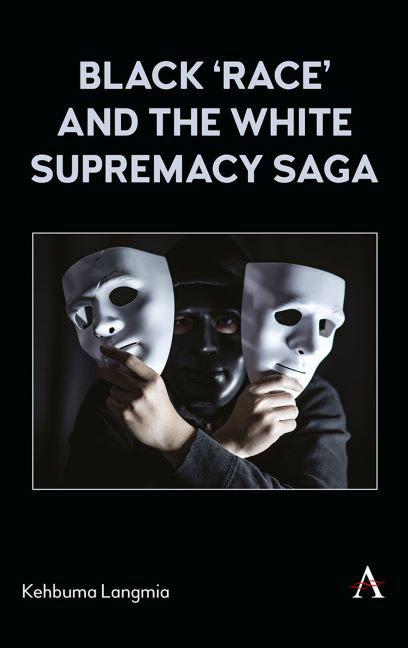Book contents
- Frontmatter
- Dedication
- Contents
- Foreword
- Acknowledgments
- 1 The Shifting Sands on the Feet of Black People
- 2 Shadow of Colonialism and Slavery on Black People
- 3 Black People and COVID-19
- 4 Africans and Mass Immigration
- 5 Blacks and the Politics of Demo-“Crazy” and Development
- 6 Victimhood and the Identity Crisis: Blacks and the Epistemology of Freedom
- 7 Black Status and Physical Threats
- 8 The Epistemology of Black Poverty, Resistance, and Resilience
- 9 The Politics of Europe/China Dependency on Africa
- 10 False Western Epistemological Dominance
- References
- Index
7 - Black Status and Physical Threats
Published online by Cambridge University Press: 13 April 2024
- Frontmatter
- Dedication
- Contents
- Foreword
- Acknowledgments
- 1 The Shifting Sands on the Feet of Black People
- 2 Shadow of Colonialism and Slavery on Black People
- 3 Black People and COVID-19
- 4 Africans and Mass Immigration
- 5 Blacks and the Politics of Demo-“Crazy” and Development
- 6 Victimhood and the Identity Crisis: Blacks and the Epistemology of Freedom
- 7 Black Status and Physical Threats
- 8 The Epistemology of Black Poverty, Resistance, and Resilience
- 9 The Politics of Europe/China Dependency on Africa
- 10 False Western Epistemological Dominance
- References
- Index
Summary
Natural dispositions characterized by physical attributes have elevated the perception of the Black person to be physically stronger. This psychomental predisposition of the Black person, especially by American Whites in the United States during the era of Jim Crow, made the Black person, whether male or female, or even as a little boy or girl, to be seen as a constant threat. The term criminality is coined to refer to what they’ve termed the “fugitive” Black. The story of Emmet Till, a 14-year-old boy who was brutally murdered by a group of White men in Mississippi on August 28, 1955, for whistling at a white woman, is a testimonial justification that the Black person, regardless of age or gender, is a danger and danger can only be perceived if the perceiver is in a weaker position. This is also seen when the Police force has, in countless occasions, unleased not one but several bullets to kill an armless Black person for fear that one or two bullets would be insufficient to seal the ultimate deal of death it craves. So, it would be better if he was shot multiple times as if his tiny body was that of an elephant. The physical strength, when combined with financial success, can be another threat. This view is shared by Trymaine Lee, writing a chapter in Nicole Hannah-Jones, 1619 best seller book project published in the last quarter of 2021: “Black people's financial success often seemed to provoke the harshest response, especially from White people who felt threatened by a real or perceived rise in African American prosperity” (Lee 2021, p. 299).
There is apparently no justifiable reason to shoot an unarmed Black youngster who poses no threat whatsoever to a group of policemen if it is not related to his/her physical strength that they think could overpower the Police force. Leslie Alexander and Michelle Alexander's article on “Fear” in the same 1619 project edited by Hannah Nicole Jones provides this narrative:
[…] weeks before George Floyd was murdered, another viral video had revealed to the nation–and much to the world–that white fear is easily and routinely weaponized by ordinary people with potentially deadly consequences.
- Type
- Chapter
- Information
- Black 'Race' and the White Supremacy Saga , pp. 105 - 118Publisher: Anthem PressPrint publication year: 2024

